Egyptians, Greeks, Romans – they all knew and appreciated Sardinia. There’s a true holiday paradise waiting for you on this impressive island surrounded by numerous other small and even tinier island. Already populated in primeval times, you’ll come across historic evidence of the entire history of mankind with ruins and constructions of various advanced civilizations, ruling families and dynasties. There’s also the breathtakingly stunning nature with its many beaches, bays and grottos. You don’t know where to start? We feel you! Get your inspiration from the following top 10 sights of Sardinia.
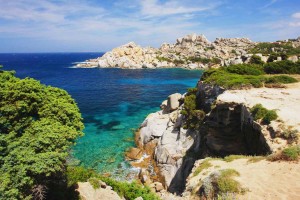
©Bigstock.com/Mildax
Capo Testa
You’ll come across this very special peninsula just a few kilometres west of the northernmost point of Sardinia. Wind and weather caused the outright bizarre shapes of the granite rocks over the course of millennia. Many of them now carry the names of animals due to corresponding resemblances. Capo Testa is a popular destination for trips with its divine beach bays. If you want to swim here, however, you have to get early, because the beaches fill up in no time, particularly on hot days. There’s also the option to go on a highly rewarding brief walk to the old lighthouse.
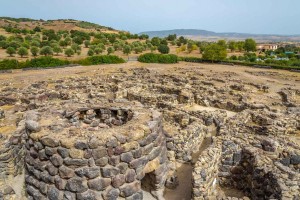
©Bigstock.com/milosk50
Su Nuraxi near Barumini
The best way to see just how far Sardinia’s history goes back is located about one kilometre outside Barumini where the Su Nuraxi (Eng. “The Nuraghe”) rise. They are prehistoric towers that date back to the Late Bronze Age in the mid-second century BC. Located on a slight lift, you come across one central tower and four corner towers surrounded by walls. Once you examine the UNESCO World Heritage Site more closely you find the ruins of another nine towers and the remains of a village. Is there any other place where you can experience prehistory as closely as here?
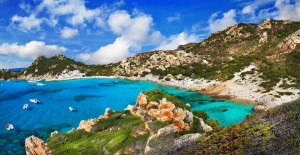
©Bigstock.com/Maugli-l
La Maddalena
La Maddalena is a group of 62 islands and inselbergs in the northeast of Sardinia. Its history goes back to primeval times. Even the Romans had colonies here. After the fall of the Western Roman Empire it took several centuries until the islands were populated again. Nowadays most of the archipelago has unlocked its touristic potential. You stroll across idyllic squares past small restaurants and bars in the eponymous capital La Maddalena. Numerous small beaches and characteristic Mediterranean vegetation offer so much to see and experience.
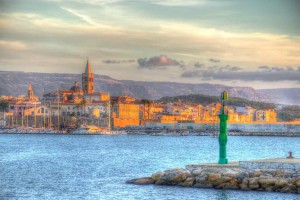
©Bigstock.com/Al_Kan
Alghero
Arriving at one of the warmest places in all of Sardinia, you hear a language that might confuse you initially. Alghero had been ruled by the Catalan Crown of Aragon for a long time. To this day many inhabitants still speak this dialect, which is why the Catalan language is co-official here. But that’s certainly not all. Several tours of the city start at the port, such as the stroll along the town walls. There’s also the prehistoric excavation site Anghelu Ruiu you have to check out.
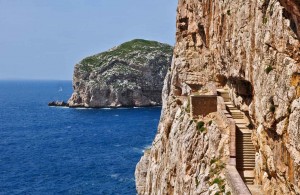
©Bigstock.com/Prashant Agrawal
Neptune’s Grotto
Since you’re already in Alghero, why not plan a short trip to nearby Neptune’s Grotto. You can only visit it when the waters are calm due to its special location at the foot of a steep, 110-metre-high cliff. 654 steps or a boat tour take you to the glorious caves. Fascinating stalactite formations and a small saltwater lake connected directly to the sea will wow you.
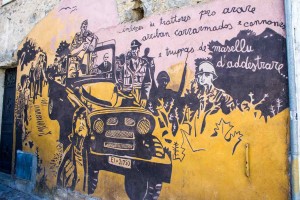
©Bigstock.com/marcociannarel
Orgosolo’s murals
No matter where you look, Orgosolo’s walls are covered in very special drawings and paintings. These murals have made the village famous far beyond Sardinia. They emerged in 1968 and spread to a great extent in later years. They predominantly served as social commentary on and protest of global politics. Some murals question the unnecessary civilian victims during the overthrow of Saddam Hussein, others criticise the embezzlement of reconstruction funds by corporate CEOs. The murals survived the weather and renovations rather well.
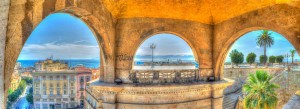
©Bigstock.com/Al_Kan
Bastion of Saint Remy
Tourists and locals meet at the Bastion of Saint Remy. They enjoy the marvellous view and spend their spare time here. Cafés, skate grounds, open air classes, concerts, the artists’ market on Sunday mornings – you have to stop by Saint Remy when you’re in Cagliari. It was once the site of a Piedmontese bastion that was converted into this grand platform with two neo-classical panorama terraces in 1909. Today’s Bastion is widely considered as one of the most beautiful places in all of Sardinia.
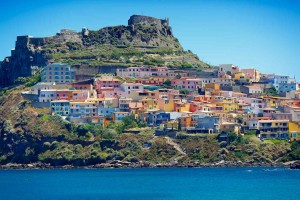
©Bigstock.com/Levranii
Castelsardo
Even from afar your gaze falls on the castle rising high above the cape. Castelsardo, founded over 900 years ago by the Doria family from Genua, retained most of its original charm. Aside from the impressive Aragonese castle, you get to see a gorgeous cathedral that, despite numerous renovations, still possesses parts of its original 16th century building during your walk. There’s also the approx. five-metre-high Elephant’s Rock that indeed looks like an elephant from a certain angle.
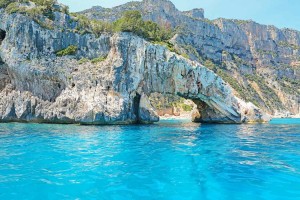
©Bigstock.com/Al_Kan
Cala Goloritzé
There’s a sheer abundance of beaches in Sardinia, yet there are certain spots that are absolutely worth going the extra mile. Cala Goloritzé is waiting for you in Baunei in the eastern part of the island. You can only reach this very special beach by boat or after a long hike. It was formed by a landslide in 1962 and has since been declared “Italian National Monument”. Its natural arch, the high top above the bay and the fine sandy beach covered in white pebbles make dreams come true.
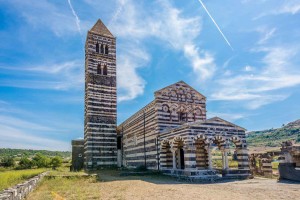
©Bigstock.com/milosk50
Santissima Trinità di Saccaragia
This abbey church is one of the most important examples of 12th century Romanesque-Pisane architecture. According to legend, a cow once kneeled down for prayer on this very spot, hence the name “sa acca argia” (Eng. “the speckled cow”). You can already see its shining black trachyte and white limestone stripes from afar. The frescoes with clear Byzantine influence in the central apse are unique for Sardinia. A cow capital inspired by the legend can be seen on the face of the church next to many other figurines.
Wherever you feel like going on this island, Sardinia’s always worth the journey. After all, where else can you see everything from prehistory to cultural marvels to natural perfection in one place? If you’re interested in more Italian travel destinations, ZAINOO’s the right place for you!